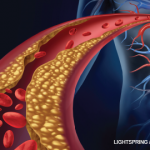Canakinumab in a dose of 150 mg every three months led to significantly lower rates of recurrent CV events than placebo, independent of lipid-level lowering. Although administration of canakinumab on a wide scale seems impractical given the cost, the trial did serve as proof of concept. More recently, colchicine, a far less expensive anti-inflammatory medication, has been shown to significantly reduce nonfatal CV events in patients with coronary artery disease.4-6
To date, studies investigating the protective CV effects of immunosuppressive therapies in rheumatology patient populations are observational only, but encouraging. For patients with rheumatoid arthritis, methotrexate and tumor necrosis factor-α (TNF-α) inhibitors may be of benefit. Effects are less clear in patients with psoriatic arthritis.7
Lihi Eder, MD, PhD, associate professor of medicine at the University of Toronto and co-director of the University of Toronto Cardio-Rheumatology Network, Ontario, Canada, notes that early observational studies may also suggest a protective effect of IL-17 and IL-23 inhibitors.
 On the other hand, in February 2021, the U.S. Food & Drug Administration (FDA) alerted the public that tofacitinib, a Janus kinase ( JAK) inhibitor, may increase the risk of “serious heart-related issues” compared with TNF-α inhibitors, according to preliminary results from a safety clinical trial.8 On Sept. 1, the FDA announced that it is requiring revisions to the Boxed Warning for tofacitinib and other JAK inhibitors to include information about the risks of serious heart-related events, cancer, blood clots and death.
On the other hand, in February 2021, the U.S. Food & Drug Administration (FDA) alerted the public that tofacitinib, a Janus kinase ( JAK) inhibitor, may increase the risk of “serious heart-related issues” compared with TNF-α inhibitors, according to preliminary results from a safety clinical trial.8 On Sept. 1, the FDA announced that it is requiring revisions to the Boxed Warning for tofacitinib and other JAK inhibitors to include information about the risks of serious heart-related events, cancer, blood clots and death.
Dr. Eder adds a caveat, saying that although more data are needed to definitively understand this risk, this information reminds us that not all mechanisms of action will be cardioprotective.
Our Role
Updated clinical practice guidelines regarding the management of patients with PsA from EULAR and the Group for Research and Assessment of Psoriasis and Psoriatic Arthritis (GRAPPA) stress the importance of CV risk monitoring in patients with PsA.9,10 But what exactly are the role and responsibility of the practicing rheumatology health professional here?
I know what you’re thinking … because I’m thinking it too. In a fee-for-service healthcare landscape, in which we are pressured to see more patients in less time, these thoughts are magnified. Expecting the rheumatologist to assess PsA disease activity, fine-tune complicated medication regimens, monitor for drug toxicity and listen empathetically—all in the span of 15 to 20 minutes—is already a lofty ask. To further expect us to assess and manage CV risk in the same amount of time feels untenable. But as I frequently remark to patients in clinic, “Heart disease will getcha a lot quicker than your arthritis will.” So where can we meet in the middle?



